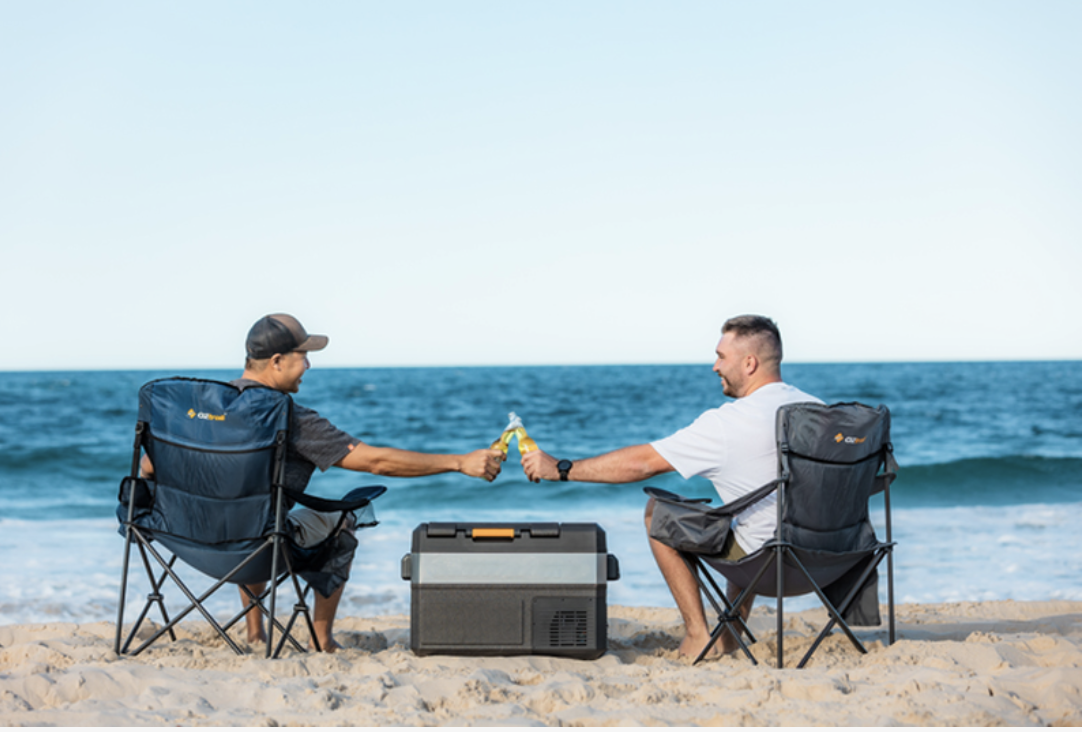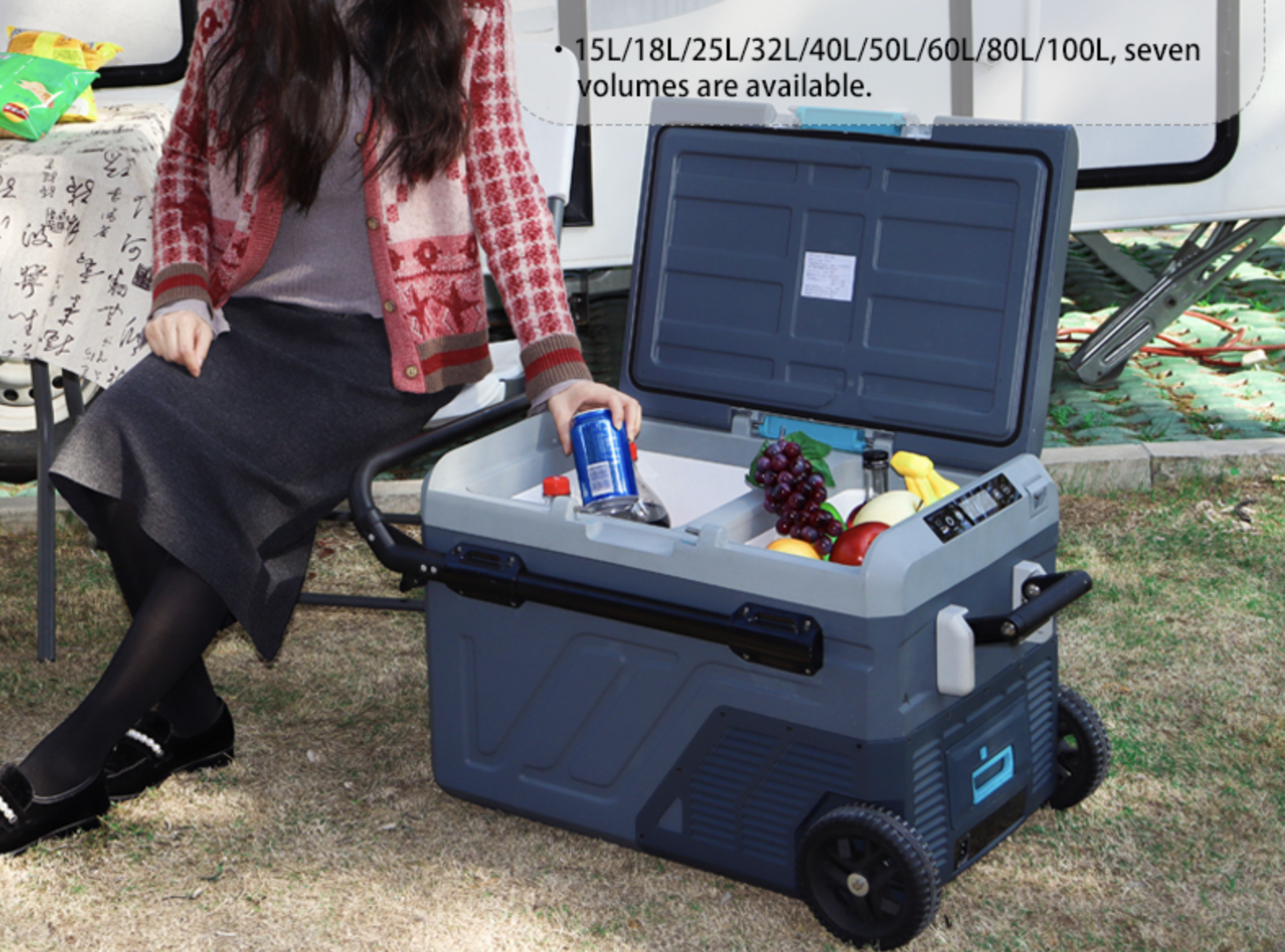A 12V fridge can run on your car battery for several hours, but it depends on a few things. The battery’s capacity, the fridge’s power usage, and even the weather play a role. If you’re not careful, you could drain the battery and leave your car stranded. Car refrigerator manufacturers, like this one here, recommend monitoring your battery closely to avoid trouble.
Key Takeaways
- Know how much power your car battery holds. A deep-cycle battery works better because it lasts longer without harm.
- Figure out how much power your fridge uses. Divide the watts by 12 to find the amps it needs each hour.
- Think about adding a second battery. This lets you use the fridge without using the car’s starting battery.
Key factors affecting the runtime of a 12V fridge
Battery capacity and type
Your car battery’s capacity plays a huge role in how long your 12V fridge can run. Batteries are rated in amp-hours (Ah), which tells you how much energy they can store. For example, a 50Ah battery can theoretically provide 50 amps for one hour or 5 amps for 10 hours. However, not all batteries are the same. Deep-cycle batteries are better for running appliances like fridges because they’re designed to discharge more deeply without damage. Standard car batteries, on the other hand, are meant for short bursts of power, like starting your engine.
Fridge power consumption
Every fridge has a different power draw. Some compact models use as little as 1 amp per hour, while larger ones might need 5 amps or more. Check your fridge’s specifications to find its power consumption. If you’re unsure, you can use a simple formula: divide the fridge’s wattage by 12 (the voltage of your car battery). For example, a 60-watt fridge uses about 5 amps per hour.
Ambient temperature and insulation
Hot weather can make your fridge work harder, draining your battery faster. If you’re camping in the summer, you’ll notice the fridge cycling on more often to maintain its temperature. Good insulation helps reduce this effect. Some fridges come with built-in insulation, but you can also add an insulating cover for extra efficiency.
Tip: Park your car in the shade or use a reflective windshield cover to keep the interior cooler.
Battery health and age
An old or poorly maintained battery won’t hold a charge as well as a new one. If your battery struggles to start your car, it’s probably not up to the task of running a fridge for long. Regular maintenance, like cleaning the terminals and checking the electrolyte levels, can help extend your battery’s life.
Whether the car engine is running or off
If your car engine is running, the alternator charges the battery, allowing the fridge to run indefinitely. But when the engine is off, the fridge relies solely on the battery. This is when you need to be cautious. Running the fridge for too long without starting the engine can leave you stranded with a dead battery.
Note: Some car refrigerator manufacturers recommend using a dual-battery system to avoid draining your main battery.
Calculating the runtime of a 12V fridge
Understanding battery capacity (Ah) and voltage
To figure out how long your 12V fridge can run, you first need to understand your car battery’s capacity. Batteries are rated in amp-hours (Ah). This tells you how much current the battery can supply over time. For example, a 50Ah battery can deliver 50 amps for one hour or 5 amps for 10 hours. Most car batteries operate at 12 volts, which is the standard for running a 12V fridge. Keep in mind, though, that you shouldn’t drain your battery completely. Doing so can damage it and leave you stranded.
Determining the fridge’s power draw (watts or amps)
Next, check how much power your fridge uses. You can usually find this information on the fridge’s label or in the manual. Power is often listed in watts. To convert watts to amps, divide the wattage by 12 (the voltage of your car battery). For instance, a 60-watt fridge uses about 5 amps per hour. If the power is already listed in amps, you’re good to go.
Step-by-step calculation formula
Here’s a simple formula to calculate runtime:
- Find your battery’s usable capacity in amp-hours (Ah). Multiply the total Ah by 50% (or 0.5) to avoid fully draining it.
- Divide the usable capacity by the fridge’s power draw in amps.
For example:
If your battery is 50Ah and your fridge uses 5 amps per hour:
Usable capacity = 50Ah × 0.5 = 25Ah
Runtime = 25Ah ÷ 5A = 5 hours
Example calculation for a typical setup
Let’s say you have a 100Ah deep-cycle battery and a fridge that draws 3 amps per hour. First, calculate the usable capacity: 100Ah × 0.5 = 50Ah. Then, divide the usable capacity by the fridge’s power draw: 50Ah ÷ 3A = about 16.6 hours. That’s how long your fridge can run before you need to recharge the battery.
If you’re unsure about your setup, some car refrigerator manufacturers provide helpful tools or guides to estimate runtime. Always double-check your calculations to avoid surprises.
Practical tips to extend runtime and alternative power solutions
Optimize fridge settings (e.g., temperature and usage)
Adjusting your fridge settings can make a big difference. Set the temperature to the highest level that still keeps your food safe. For example, keeping drinks cool doesn’t require the same low temperature as storing raw meat. Also, avoid overloading the fridge. A packed fridge works harder, draining your battery faster.
Tip: Some car refrigerator manufacturers suggest using eco-mode settings if your fridge has them. This reduces power consumption significantly.
Use a dual-battery system
A dual-battery system is a game-changer. It separates your car’s main battery from the one powering your fridge. This way, you can run the fridge without worrying about draining the battery needed to start your car. Many car refrigerator manufacturers recommend this setup for frequent campers or road trippers.
Invest in a solar panel or portable power station
Solar panels and portable power stations are excellent alternatives. A solar panel can recharge your battery during the day, while a portable power station provides backup power. These options are especially useful for extended trips where you can’t rely on your car’s alternator.
Minimize fridge door openings and pre-cool items
Every time you open the fridge, warm air gets in, forcing it to work harder. Try to plan ahead and grab everything you need in one go. Pre-cooling items before placing them in the fridge also helps reduce the workload.
Regularly maintain your car battery
A well-maintained battery lasts longer and performs better. Clean the terminals, check for corrosion, and test the battery’s charge regularly. If your battery is old, consider replacing it before your trip.
The runtime of your 12V fridge depends on your battery’s capacity, the fridge’s power draw, and the environment. Use the calculation method to estimate runtime and apply tips like optimizing fridge settings or using solar panels. Always monitor your battery’s charge to avoid getting stranded. Planning ahead keeps your trip stress-free!
Pro Tip: A dual-battery system is a lifesaver for frequent travelers.
FAQ
How do I know if my car battery is too low to run the fridge?
If your car struggles to start or the fridge shuts off unexpectedly, the battery might be too low. Use a voltmeter to check its charge.
Can I run a 12V fridge overnight without draining my battery?
It depends on your battery’s capacity and the fridge’s power draw. A dual-battery system or solar panel can help you run it safely overnight.
What happens if I accidentally drain my car battery?
Your car won’t start if the battery drains completely. Jump-start it using jumper cables or a portable jump starter, then recharge the battery fully.
Tip: Always monitor your battery’s voltage to avoid surprises!
Post time: Feb-17-2025




